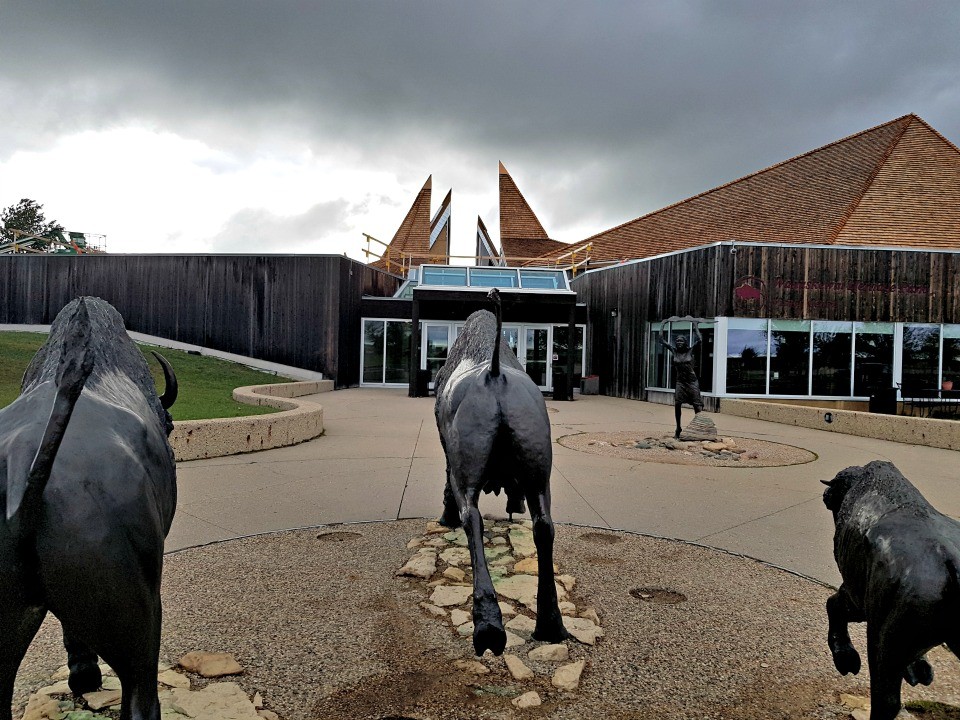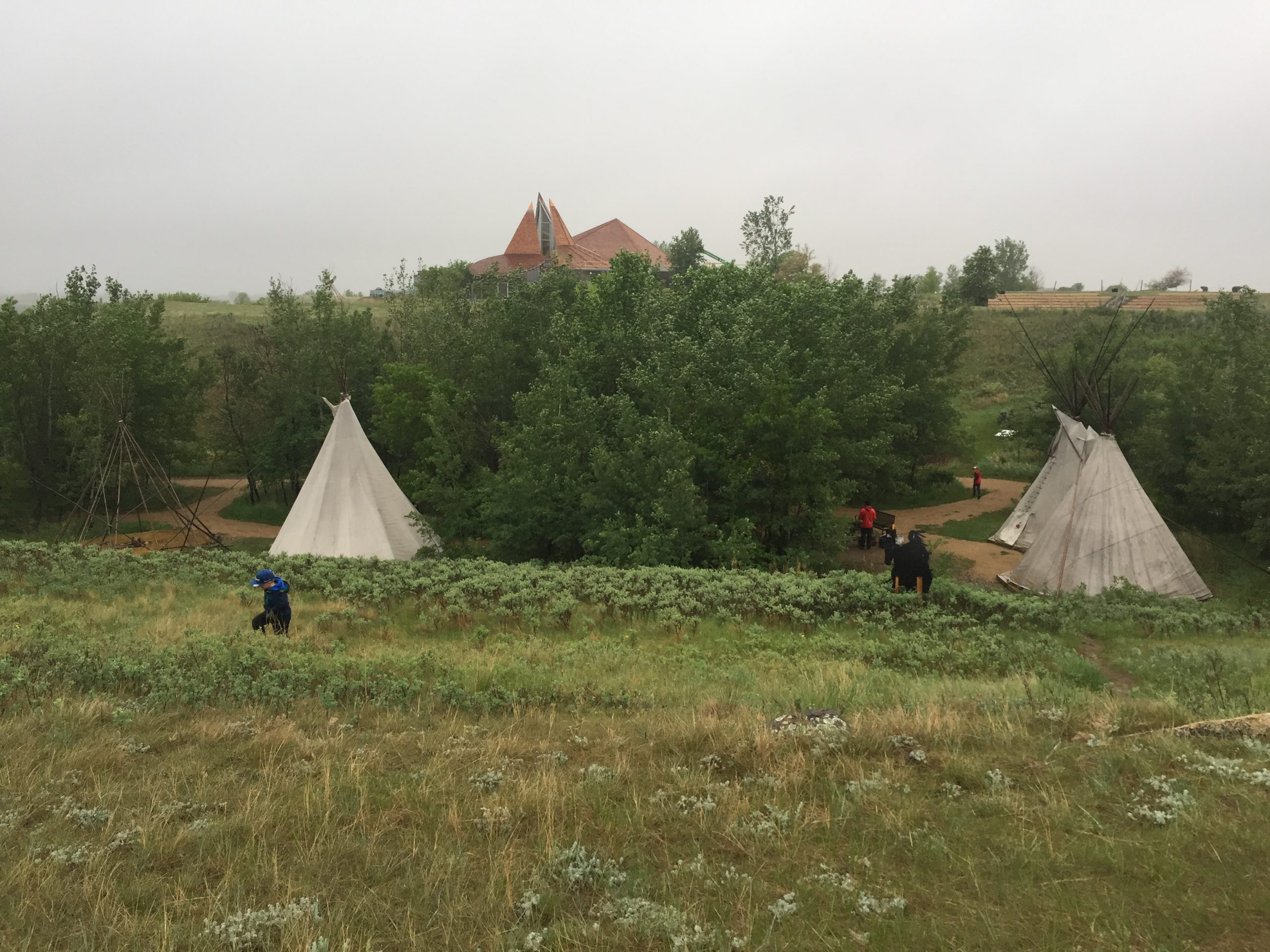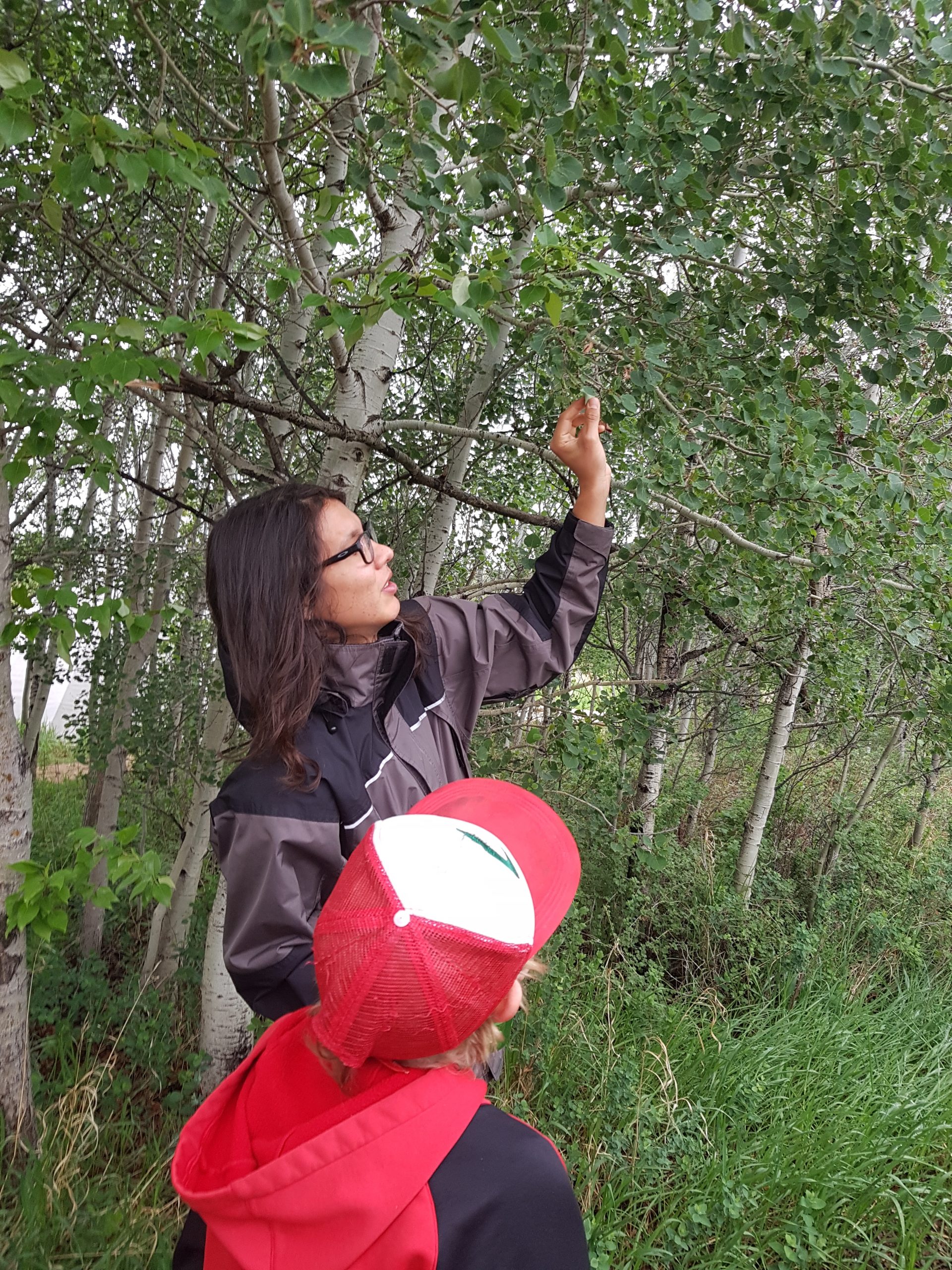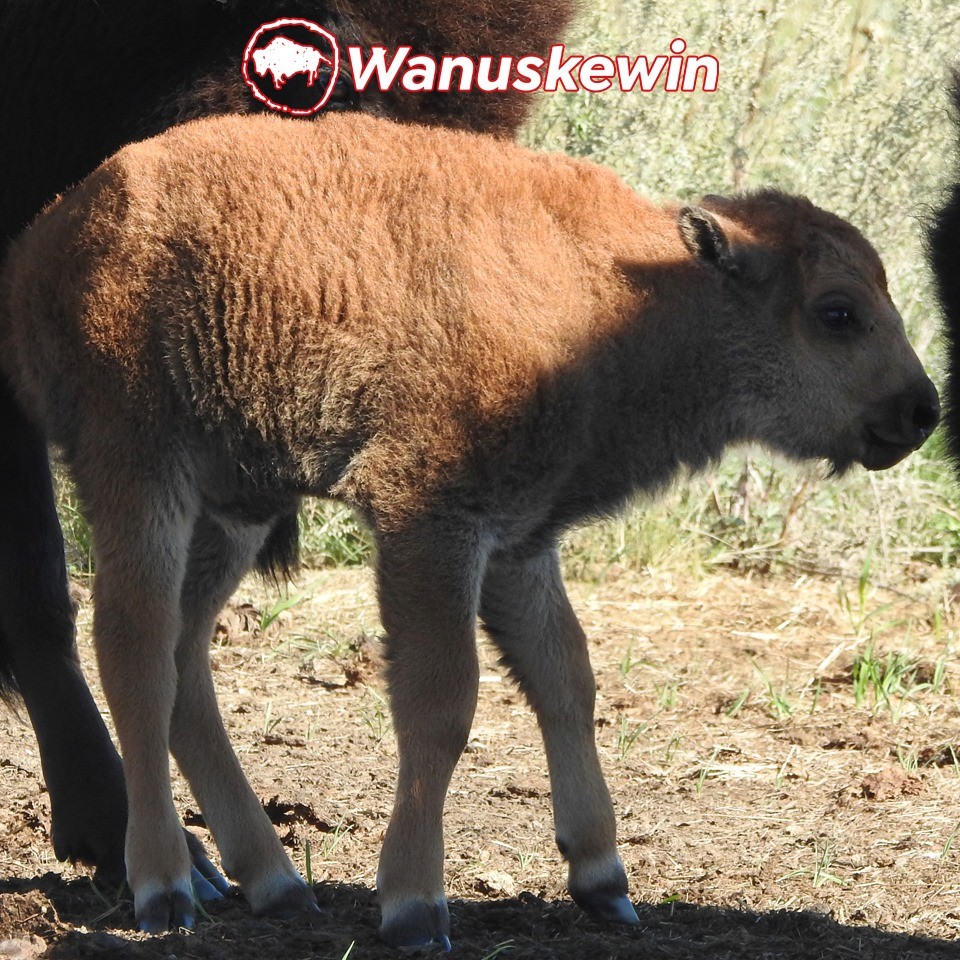On a snowy day in December 2019, Elder Cy Standing of the Wahpeton Dakota Nation welcomed eleven plains bison to their ancestral home at Wanuskewin Heritage Park near Saskatoon. A sprawling expanse of rolling yellow hills dusted with sparse patches of snow, on this momentous day Wanuskewin is the portrait of a prairie winter day. The herd, six calves, a bull, and four pregnant females emerge tentatively at first, but they quickly disperse onto the grassy plains curious about their ‘new’ surroundings. After a hiatus of 150 years, the plains bison have returned to their ancestral home.

Fast forward to fall 2021, the herd has grown to 17. And, on September 12th, well past calving season, a “bonus baby” bison girl was born–healthy and with a very protective mama! The growing lineage of these animals on this sacred land is the fruit of Parks Canada’s efforts to re-wild a selection of protected spaces across the country. The repatriated herd, with ties to Grasslands National Park and Yellowstone National Park, now roam Wanuskewin’s expanse of historical lands and can be spotted by lucky visitors to the Park.
The bison can be viewed by passersby year-round on self-guided walking tours of the park and special event tours. They are a majestic reminder of the deep, historical significance of Wanuskewin. Dating back 6000 years, the land, now a stand-alone heritage park, was a meeting place for northern plains people from all around North America. Archaeological finds, dating back to before the Egyptian pyramids, show that virtually every pre-contact cultural group in the Great Plains visited the area. Tipi rings, stone cairns, pottery fragments, bones, a medicine wheel, and other items have been excavated from the site’s 19 dig sites though the understated hills and coulees do little to share the secrets of the bustling life that once dominated the area.

Photo Adele Paul
Visitors do not come to Wanuskewin for informational plaques and stories of artifacts, though these things do exist in its state-of-the-art interpretive centre. Rather, they are drawn into a land of subtle beauty that holds the remnants of a sacred, heart-stopping ritual–the buffalo hunt. When walking the grounds of Wanuskewin, visitors will shortly find themselves at the bottom of a steep cliff directly beneath the dramatic peaks of the interpretive centre. True to the unassuming nature of the park, the land itself reveals nothing more than native plants and a green hillside. But that exact spot is the foot of the ‘buffalo jump’ where hundreds if not thousands of plains bison were driven to their deaths over the span of centuries. Truly the highlight of any visit to Wanusekwin is simply pausing at this spot and honouring the vision of stampeding animals and the people that used their hides, bones, and flesh to survive.

Photo Adele Paul
The reintroduction of plains bison to their ancestral home is a reflection of Wanuskewin’s deep and unique commitment ‘to be a living reminder of the peoples’ sacred relationship with the land.’ The arrival of a new calf is both a connection to the past and a living, breathing reminder of what is possible in the present. Lucky for the little one and the repatriated herd, though, the buffalo jump is now behind a fence.




